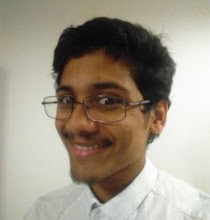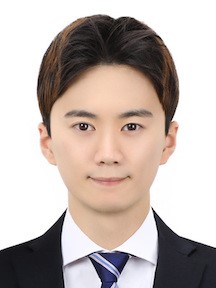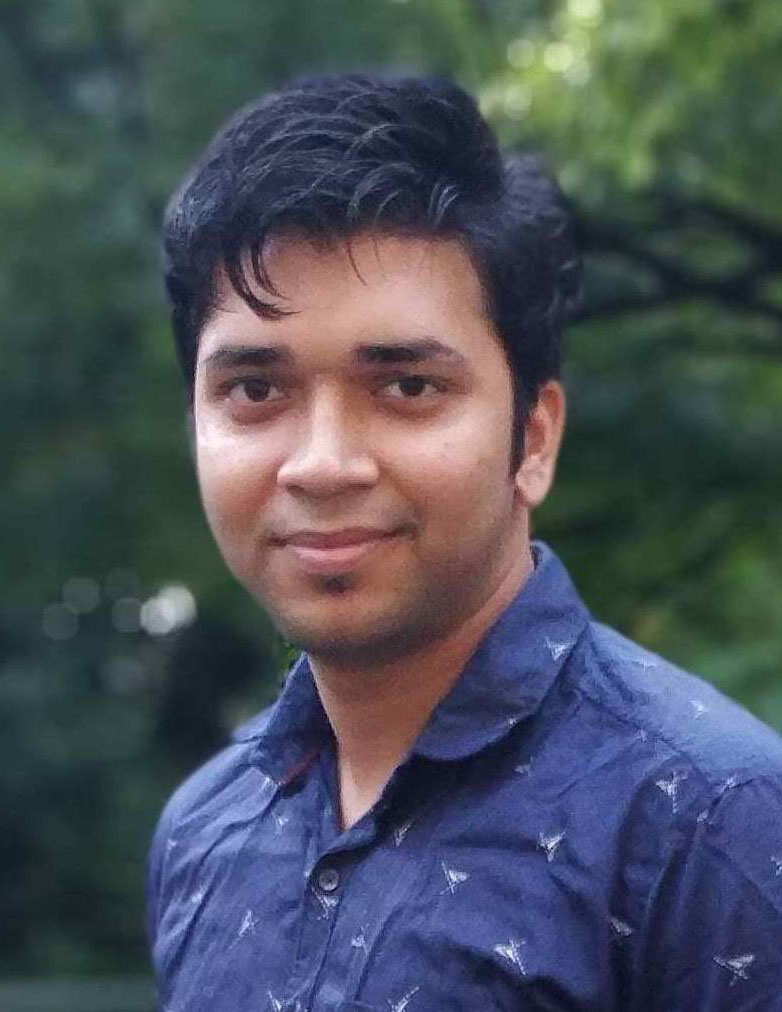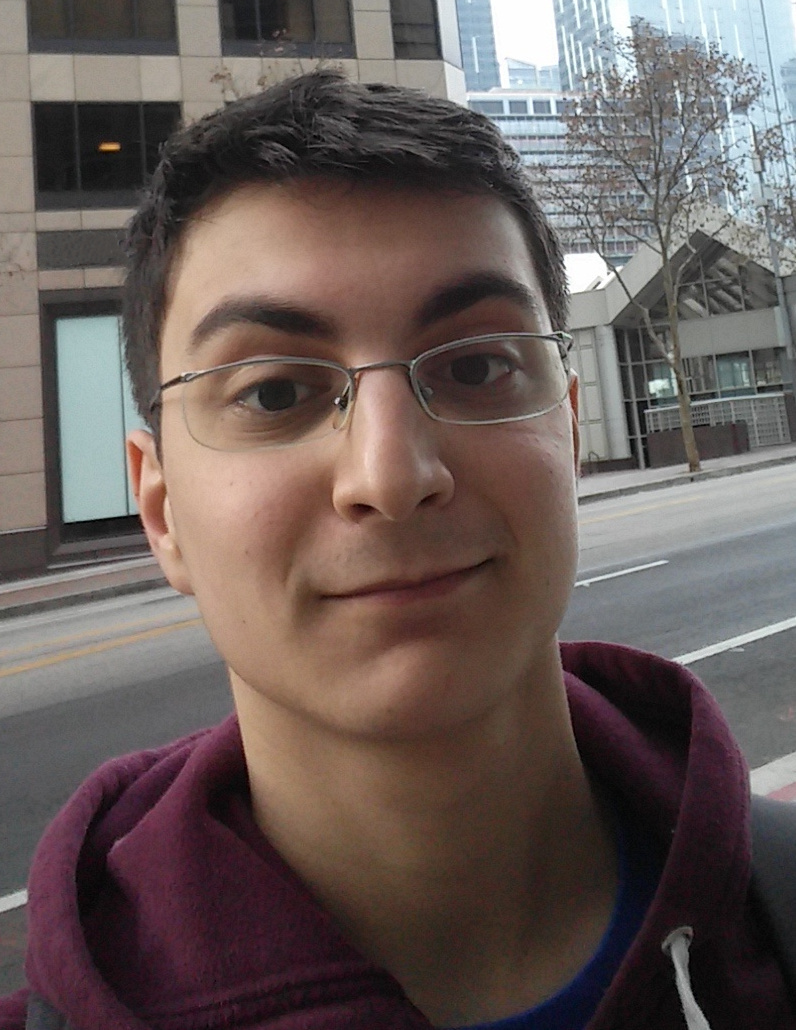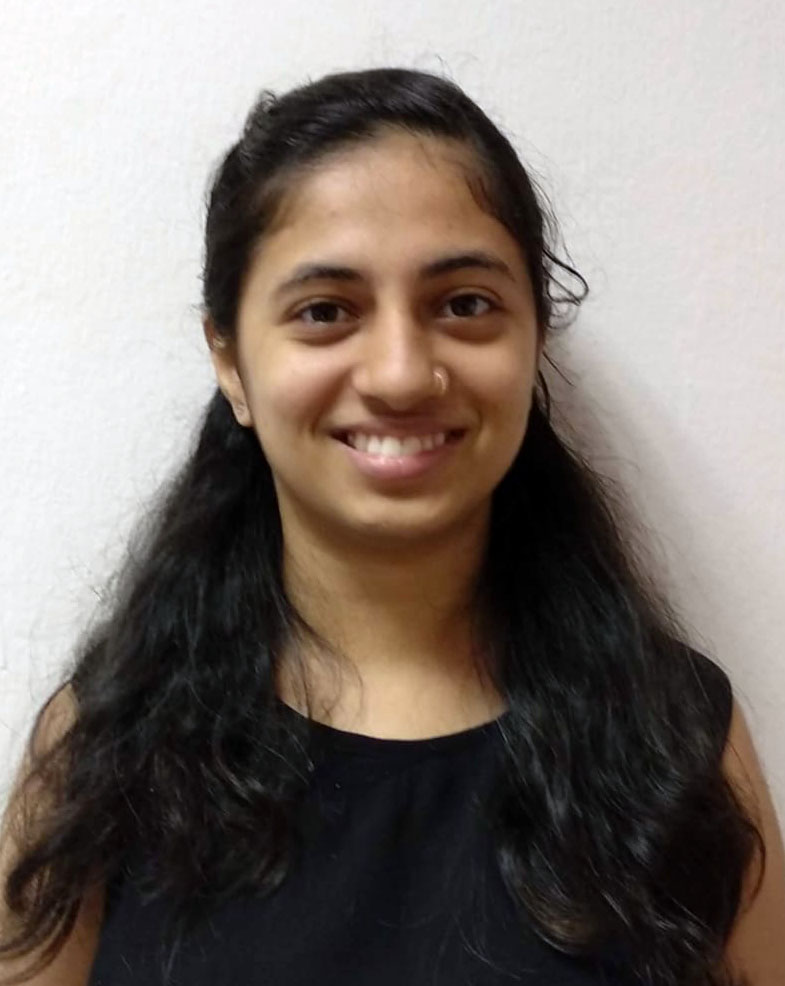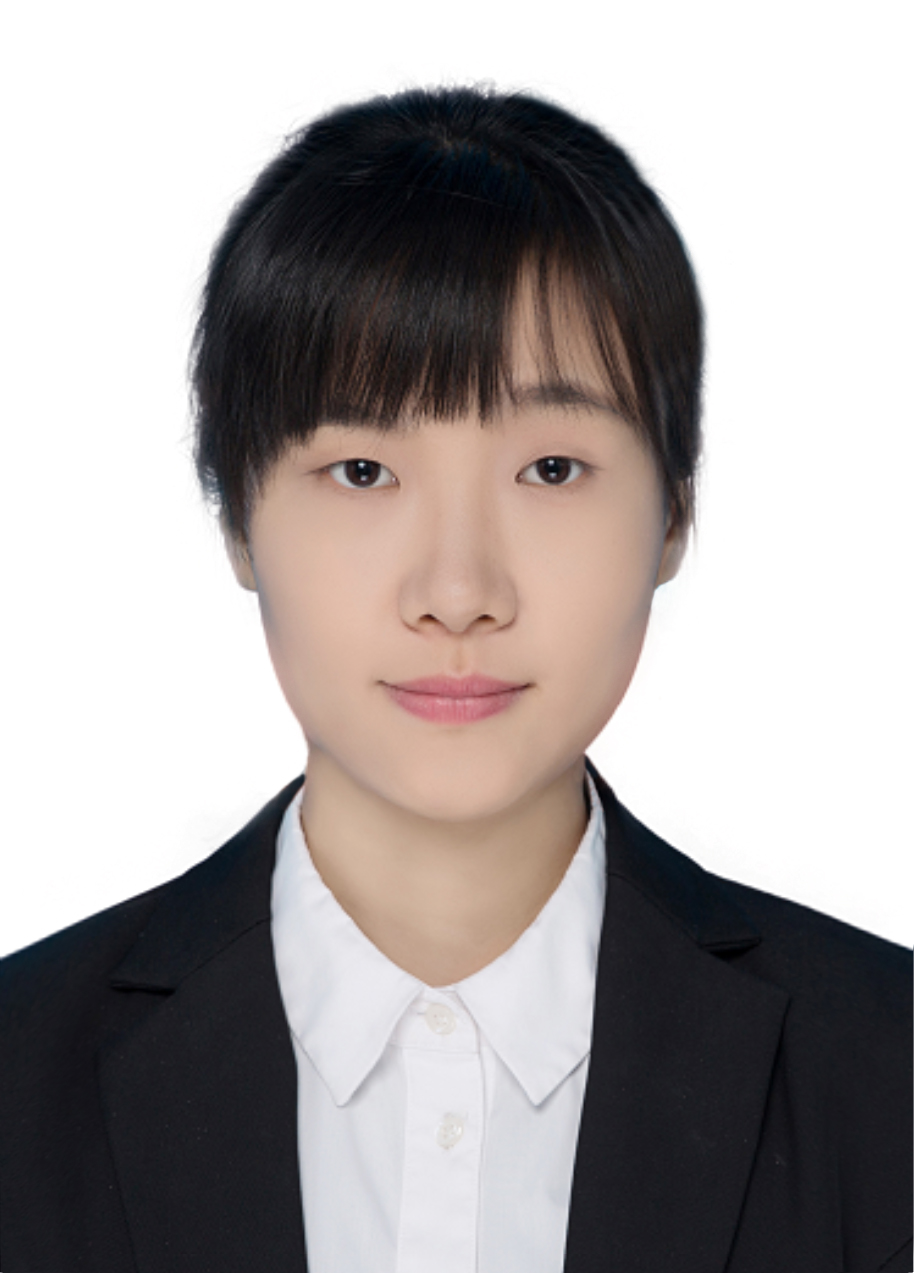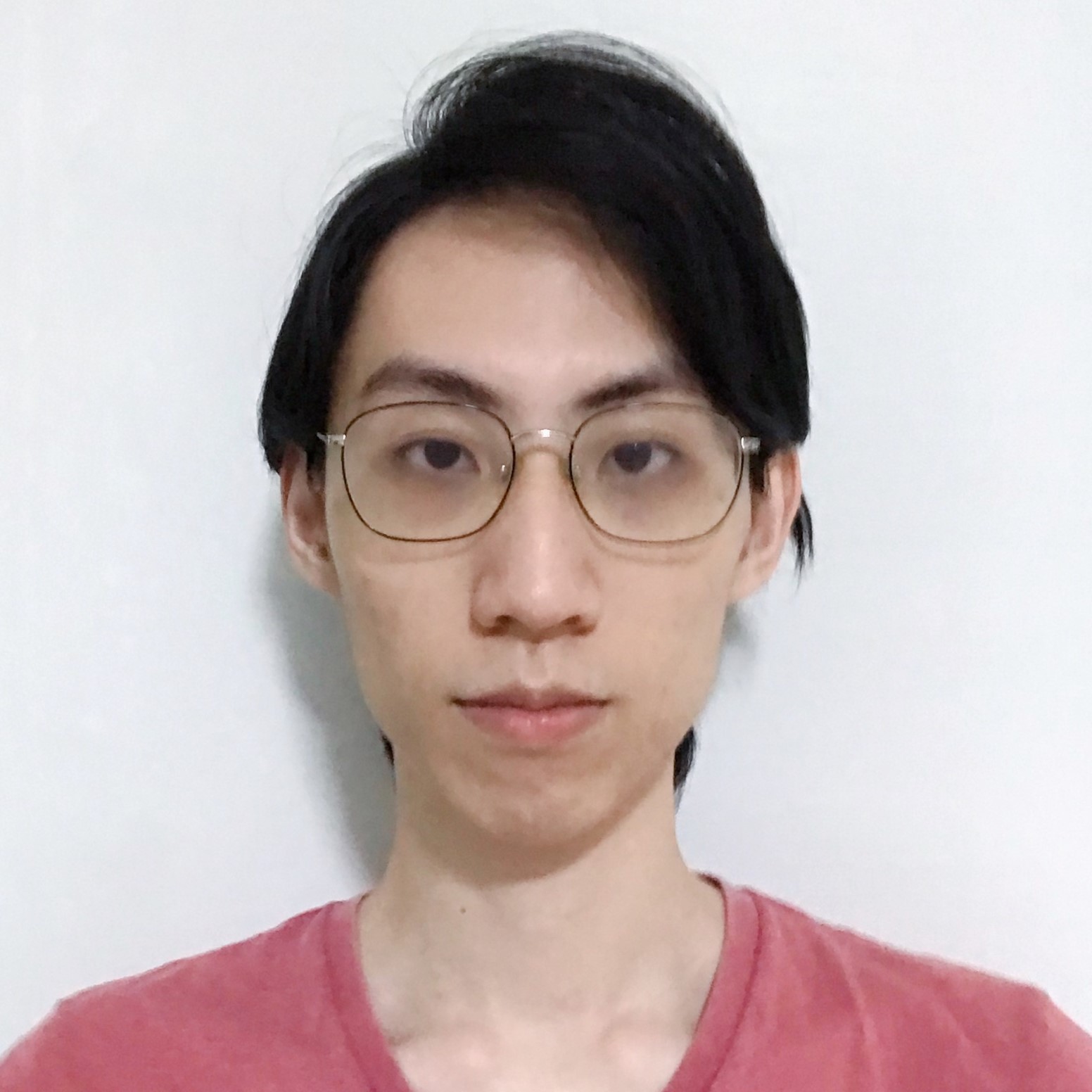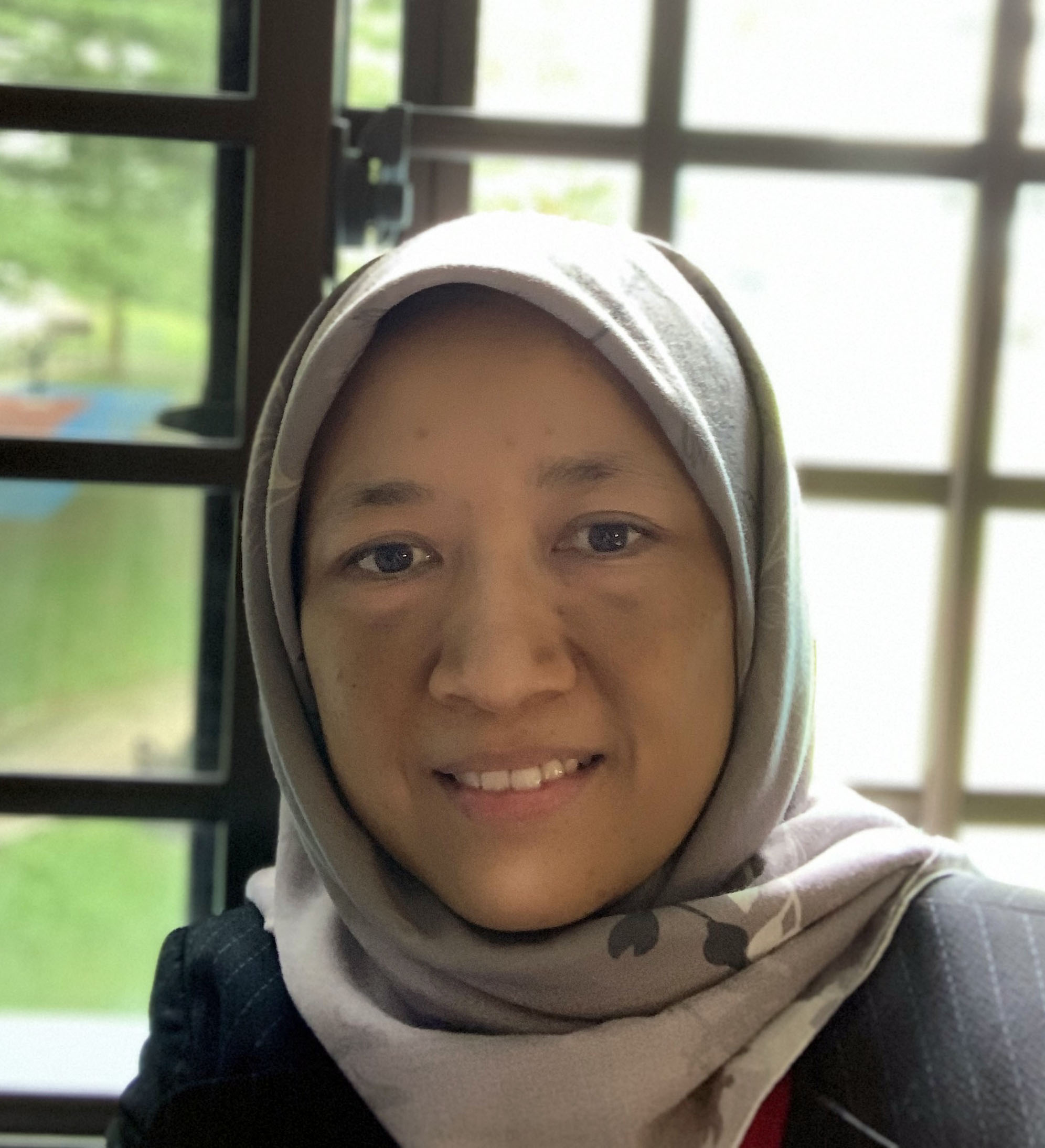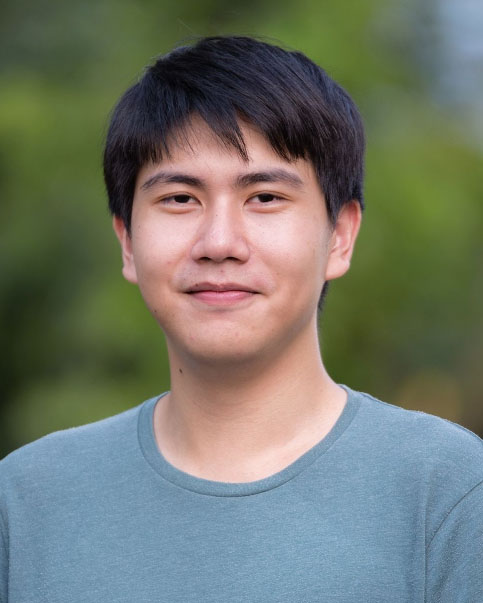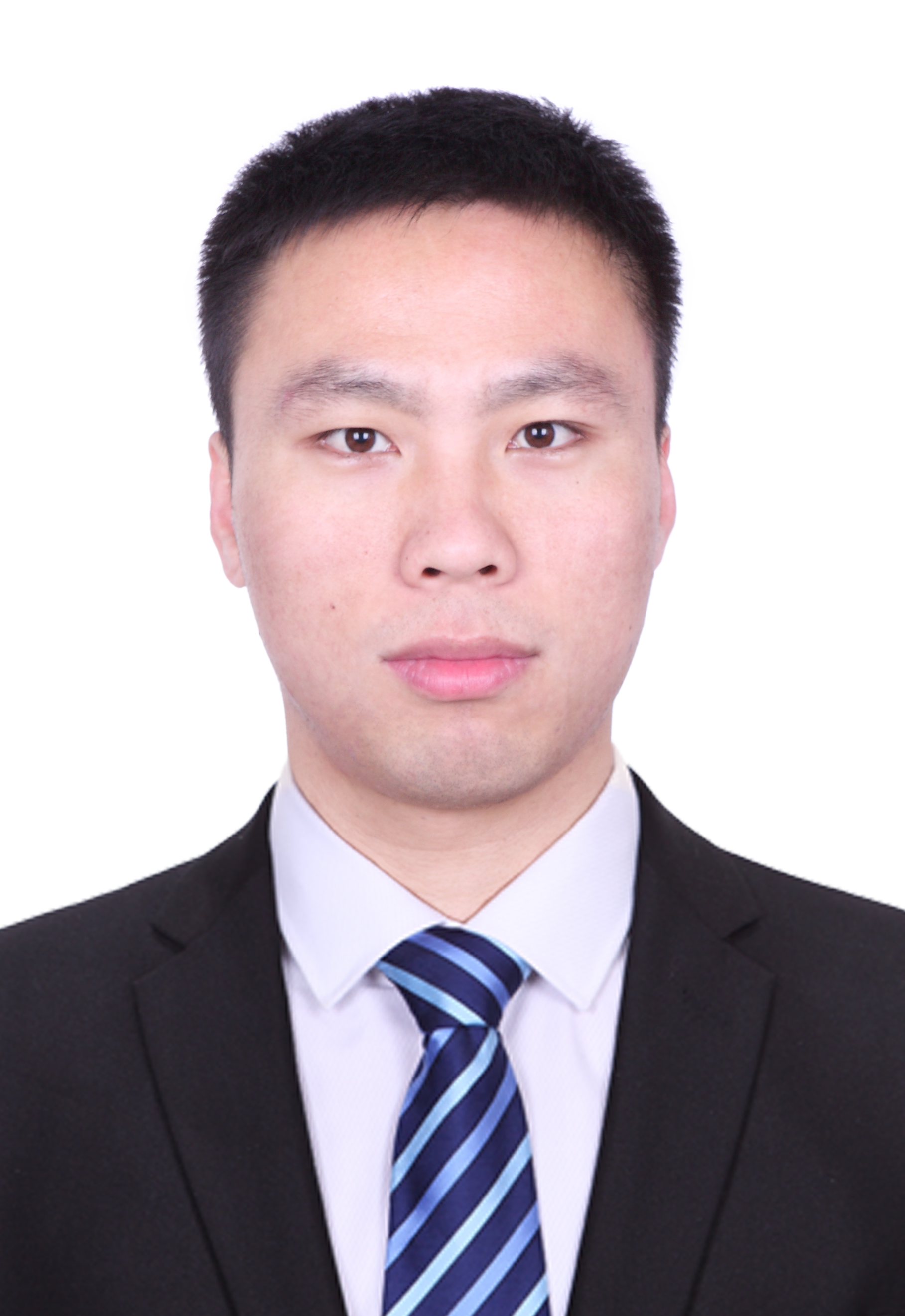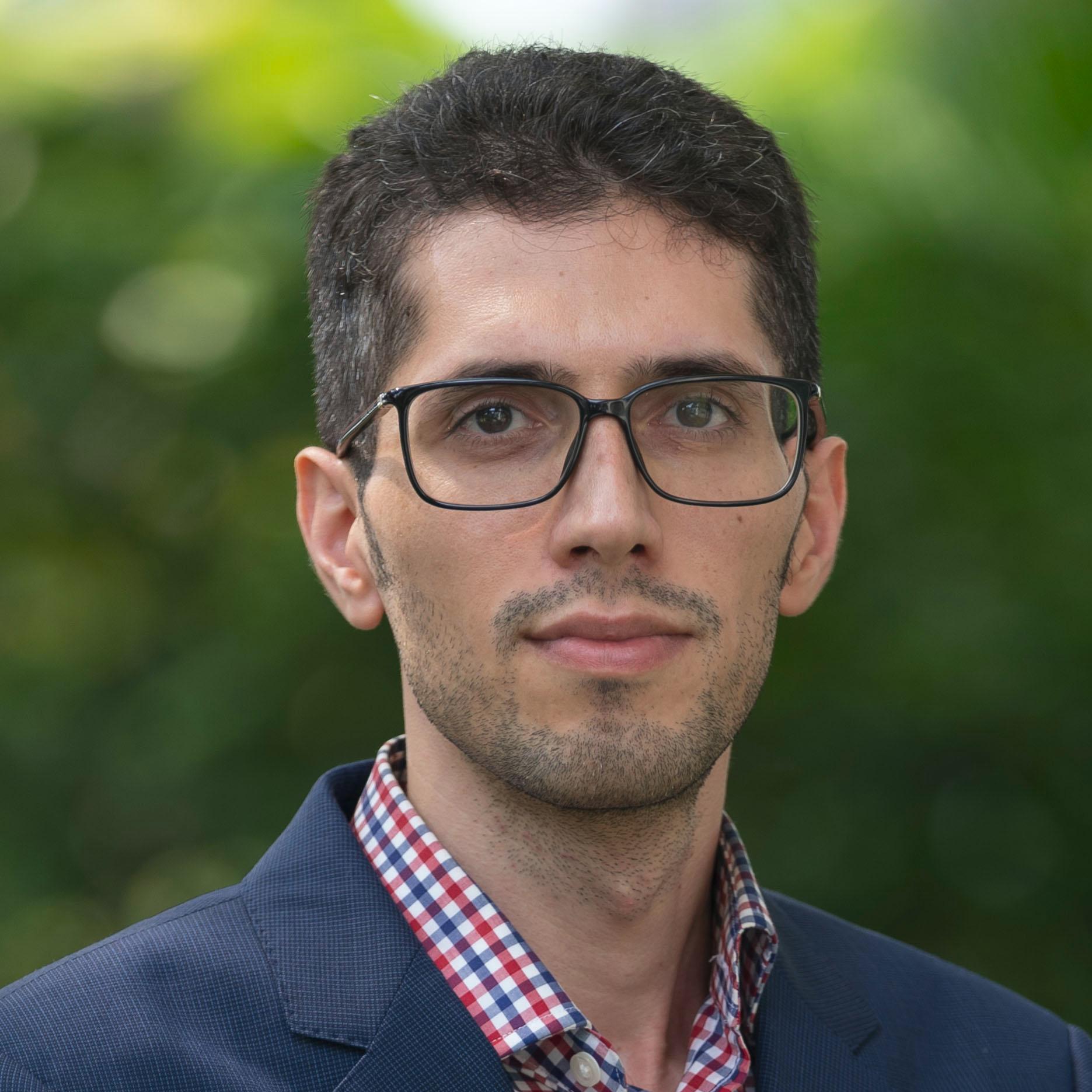

Panel 2 - Navigating Your PhD: Managing Your Research, Your Advisor, and Your Career - Guests
Tuesday, 3/8/2021
09:30 – 09:50 Opening Remarks
09:50 – 10:40 Keynote 1: Concurrent Adversarial Learning for Large-Batch Training - YOU Yang
10:40 – 11:05 Receding Horizon Inverse Reinforcement Learning - XU Yiqing [video]
11:05 – 11:30 Ab Initio Particle-based Object Manipulation - Chen Siwei [video]
11:30 – 11:40 Break
11:40 – 12:05 Anomaly Detection in Data Streams - Siddharth Bhatia [video]
12:05 – 12:30 Program Synthesis as Dependency Quantified Formula Modulo Theory - Priyanka Golia
12:30 – 13:30 Lunch Break
13:30 – 14:00 Award Winners Session 1
Best Paper Awards
– Prof. He Bingsheng and collaborators: won the 2019 Best Paper Award from IEEE Transactions on Parallel and Distributed Systems: Exploiting GPUs for efficient gradient boosting decision tree training. IEEE Transactions on Parallel and Distributed Systems, 2019
– Li Qinbin: won PREMIA Best Student Paper Gold Award for the paper "Practical federated gradient boosting decision trees"
Academic Recognition Awards
– Prof. He Bingsheng: elected as Distinguished Members of ACM 2020
– Prof. Abhik Roychoudhury: elected as Distinguished Members of ACM 2020
Competition Awards
– Prof. Kuldeep Meel and his team: won 1st place in two out of three tracks at Model Counting Competition 2020
14:00 – 14:50 Keynote 2: Parallel Graph Processing Systems on Heterogeneous Architecture - HE Bingsheng
14:50 – 15:15 Partition Function Estimation: A Quantitative Study - Yash Pralhad Pote
15:15 – 15:40 Efficient Deep Learning Pipelines for Accurate Cost Estimations Over Large Scale Query Workload - Johan Kok Zhi Kang
15:40 – 15:50 Coffee break
15:50 – 16:15 Zero-Shot Natural Language Generation with Encoder-Decoder Transformers - Devamanyu Hazarika [video]
16:15 – 16:40 Coarse to Fine Multi-Resolution Temporal Convolutional Network - Dipika Singhania [video]
16:40 – 16:50 Break
16:50 – 18:00 Panel 1 - Heterogeneity in Federated Learning
Panel Topics:
– Why is Federated Learning important?
– Why is heterogeneity a problem for FL?
– How to overcome statistical and systems heterogeneity?
– What are the tradeoffs to consider when dealing with heterogeneity?
– How can overcoming heterogeneity bring FL to being more widely deployed?
Moderator: Eric Han
Panelists:
– Reza Shokri
– He Bingsheng
– Han Yu
Wednesday, 4/8/2021
09:50 – 10:40 Keynote 3: What Does Your Walking Reveal about You? - Terence SIM
10:40 – 11:05 WATSON: Abstracting Behaviors from Audit Logs via Aggregation of Contextual Semantics - ZENG Jun [video]
11:05 – 11:30 On the privacy risks of algorithmic fairness - Chang Hongyan [video]
11:30 – 11:40 Break
11:40 – 12:05 Differential Privacy dynamics of Noisy Gradient Descent - Rishav Chourasia
12:05 – 12:30 Automated Timed Temporal Verification for a Mixed Sync-Async Concurrency Paradigm - Song Yahui [video]
12:30 – 13:30 Lunch Break
13:30 – 14:00 Award Winners Session 2
Best Paper Awards
– Prof. Ilya Sergey and collaborators: won the distinguished paper award for PLDI 2021 for their work "Cyclic program synthesis"
– Shen Shiqi, Aashish Kolluri and co-authors (Prof. Abhik Roychoudhury and Prof. Prateek Saxena): won best paper award at ACM AsiaCCS 2021 for ‘Localising Vulnerabilities Statistically From One Exploit’.
– Prof. Yu Haifeng and Irvan Jaha: won the Best Paper award at ACM Symposium on Parallelism in Algorithms and Architectures (SPAA'20) for their paper "Sublinear Algorithms in T-interval Dynamic Networks."
– Nguyen Van Hoang and co-authors (Kan Min-Yen): won the 2020 CIKM best paper award: FANG: Leveraging Social Context for Fake News Detection Using Graph Representation.
14:00 – 14:50 Keynote 4: Trusted Decision Marking and Dependable Intelligence: A Formal Approach - DONG Jin Song [video]
14:50 – 15:15 Code Transplantation for Program Repair - Ridwan Salihin Shariffdeen [video]
15:15 – 15:40 Faster Smarter Induction in Isabelle/HOL - Yutaka Nagashima [video]
15:40 – 15:50 Coffee break
15:50 – 16:15 Tamper Detection against Unitary Operators - Naresh Goud Boddu
16:15 – 16:40 k-means++: few more steps yield constant approximation - Davin Choo [video]
16:40 – 16:50 Break
16:50 – 18:00 Panel 2 - Navigating Your PhD: Managing Your Research, Your Advisor, and Your Career
Panel Topics:
– What I wish I knew when I started grad school
– Managing your research and your advisor
– Planning your career
Moderator: George Pîrlea
Panelists:
– PEH Li Shiuan
– Prateek SAXENA
– Jialin LI
– Seth Lewis GILBERT
Thursday, 5/8/2021
09:50 – 10:40 Keynote 5: Blockchain Security and the Coalition Formation of its Writers - LI Xiaofan [video]
10:40 – 11:05 Intra-Team Ties and Team Performance: Evidence from Online Team-Based Games - Huang Xin
11:05 – 11:30 Pick The Odd-Ones Out! Conferring Legitimacy Of Initial Coin Offerings By Distinction - Muhammad Nauman Shahid
11:30 – 11:40 Break
11:40 – 12:05 Static Data Race Repair at Scale - Mirela Andreea Costea [video]
12:05 – 12:30 The Use of Rasch Model to Create Adaptive Practices in e-Learning Systems - Wisam M. R. Zaqoot
12:30 – 13:30 Lunch Break
13:30 – 14:00 Award Winners Session 3
Test of Time Awards
– Prof. Reza Shokri and co-authors: won IEEE Security and Privacy (S&P) Test-of-Time Award for "Quantifying Location Privacy"
– Prof. Lee Wee Sun and Prof. David Hsu: won Robotics Science and Systems (RSS) Test of Time Award 2021.
Academic Recognition Awards
– Prof. Kuldeep Meel: named as one of AI's 10 to Watch by IEEE Intelligent Systems
– Prof. You Yang: named as one of the Forbes 30 under 30 Asia (for work on machine learning and high performance computing)
– Prof. Reza Shokri: was awarded the VMware Early Career Faculty Award
14:00 – 14:50 Keynote 6: Building Physically-secure Systems that Maintain Efficiency and Performance - Trevor Erik CARLSON
14:50 – 15:15 A Compiler-Informed Non-speculative Out-of-Order Commit Processor - Ali Hajiabadi [video]
15:15 – 15:40 Laser Fault Injection and Its Benchmark Suite - Burin Amornpaisannon
15:40 – 15:50 Coffee break
15:50 – 16:15 Network Fault Diagnostics in Datacenters & Beyond - Pravein Govindan Kannan SoC Alumni in Academia [video]
16:15 – 16:40 Democratizing Coarse-Grained Reconfigurable Arrays - Cheng Tan SoC Alumni in Academia [video]
16:40 – 16:50 Break
16:50 – 17:40 Keynote 7: Music & Wearable Computing for Health and Learning: a Decade-long Exploration on a Neuroscience-inspired Interdisciplinary Approach - WANG Ye [video]
17:40 – 17:50 Closing Remarks

Thanks to a kind donation from SoC, this year we have a cash award for Top three student speakers selected by an open poll of SoC students and staff:
Come and vote for your favorite talks:
https://forms.office.com/pages/responsepage.aspx?id=Xu-lWwkxd06Fvc_rDTR-gjiH7LP6jQ1KibAqatRCigJURTVGNzZRTFlRS1dMV0EzVlhFUDRNS1MwMC4u
Here also attached the QR code for the link. You'll need a valid SoC account to vote. The weight ratio of staff-vote to student-vote is 2:1.
Tuesday, 3/8/2020, 09:50 – 10:40
Concurrent Adversarial Learning for Large-Batch Training – YOU Yang
Large-batch training has become a commonly used technique when training neural networks with a large number of GPU/TPU processors. As batch size increases, stochastic optimizers tend to converge to sharp local minima, leading to degraded test performance. Current methods usually use extensive data augmentation to increase the batch size, but we found the performance gain with data augmentation decreases as batch size increases, and data augmentation will become insufficient after a certain point. In this paper, we propose to use adversarial learning to increase the batch size in large-batch training. Despite being a natural choice for smoothing the decision surface and biasing towards a flat region, adversarial learning has not been successfully applied in large-batch training since it requires at least two sequential gradient computations at each step, which will at least double the running time compared with vanilla training even with a large number of processors. To overcome this issue, we propose a novel Concurrent Adversarial Learning (ConAdv) method that decouples the sequential gradient computations in adversarial learning by utilizing staled parameters. Experimental results demonstrate that ConAdv can successfully increase the batch size on both ResNet-50 and EfficientNet training on ImageNet while maintaining high accuracy. In particular, we show ConAdv alone can achieve 75.3% top-1 accuracy on ImageNet ResNet-50 training with 96K batch size, and the accuracy can be further improved to 76.2% when combining ConAdv with data augmentation. This is the first work that successfully scales ResNet-50 training batch size to 96K.
Tuesday, 3/8/2021, 10:40 – 11:05
Receding Horizon Inverse Reinforcement Learning – XU Yiqing
Inverse reinforcement learning (IRL) seeks to uncover a cost function that explains the underlying goals and preferences of expert demonstrations, thus enabling the transfer of the learned cost function to other systems with possibly different dynamics. This paper presents receding horizon inverse reinforcement learning (RHIRL), a new IRL algorithm for high-dimensional, noisy, continuous systems with unknown dynamic models.
RHIRL addresses two key challenges of IRL: scalability and robustness. To handle high-dimensional continuous systems, RHIRL matches the induced optimal trajectories with expert demonstrations locally in a receding horizon manner and ''stitches'' together the local solutions to learn the cost; it thereby avoids the ''curse of dimensionality''. This contrasts sharply with earlier algorithms that match with expert demonstrations globally. To be robust against imperfect expert demonstrations and system control noise, RHIRL learns a state-dependent cost function ''disentangled'' from system dynamics under mild conditions. Experiments on several benchmark tasks show that RHIRL outperforms state-of-the-art IRL algorithms in sample efficiency and generalization. We also prove that the cumulative error of RHIRL grows linearly in total task duration T.
Tuesday, 3/8/2021, 11:05 – 11:30
Ab Initio Particle-based Object Manipulation – Chen Siwei
This paper presents Particle-based Object Manipulation (PROMPT), a new approach to robot manipulation of novel objects ab initio, without prior object models or pre-training on a large object data set. The key element of PROMPT is a particle-based object representation, in which each particle represents a point in the object, the local geometric, physical, and other features of the point, and also its relation with other particles. Like the model-based analytic approaches to manipulation, the particle representation enables the robot to reason about the object's geometry and dynamics in order to choose suitable manipulation actions. Like the data-driven approaches, the particle representation is inferred online in real-time from visual sensor input, specifically, multi-view RGB images. The particle representation thus connects visual perception with robot control. PROMPT combines the benefits of both model-based reasoning and data-driven learning. We show empirically that PROMPT successfully handles a variety of everyday objects, some of which are transparent. It handles various manipulation tasks, including grasping, pushing, etc,. Our experiments also show that PROMPT outperforms a state-of-the-art data-driven grasping method on the daily objects, even though it does not use any offline training data.
Tuesday, 3/8/2021, 11:40 – 12:05
Anomaly Detection in Data Streams – Siddharth Bhatia
Anomaly detection is critical for finding suspicious behavior in innumerable systems, such as intrusion detection, fake ratings, and financial fraud. We need to detect anomalies in real-time or near real-time, i.e. determine if an incoming entity is anomalous or not, as soon as we receive it, to minimize the effects of malicious activities and start recovery as soon as possible. Therefore, online algorithms that can detect anomalies in a streaming manner are essential. Also, since the data increases as the stream is processed, we can only afford constant memory which makes the problem of streaming anomaly detection even more challenging.
Tuesday, 3/8/2021, 12:05 – 12:30
Program Synthesis as Dependency Quantified Formula Modulo Theory – Priyanka Golia
Given a specification G(X,Y) over inputs X and output Y and defined over a background theory {T}, the problem of program synthesis is to design a program F such that the (X,Y), where Y=F(X), satisfies the specification G. Over the past decade, syntax-guided synthesis (SyGuS) has emerged as a dominant approach to program synthesis where in addition to the specification G, the end-user also specifies a grammar L to aid the underlying synthesis engine. This paper investigates the feasibility of synthesis techniques without grammar, a sub-class defined as {T}-constrained synthesis.
We show that {T}-constrained synthesis can be reduced DQF({T}), dependency quantified formulas modulo theory. When the underlying theory is bitvectors, the corresponding DQF problem can be further reduced to Dependency Quantified Boolean Formulas (DQBF), which has seen a surge of interest from theoreticians and practitioners alike over the past few years. We rely on the progress in DQBF solving to design DQBF-based synthesizers that outperform the domain-specific program synthesis techniques; thereby positioning DQBF as a core representation language for program synthesis.
Tuesday, 3/8/2021, 14:00 – 14:50
Parallel Graph Processing Systems on Heterogeneous Architecture – HE Bingsheng
Graphs are de facto data structures for many data processing applications, and their volume is ever growing. Many graph processing tasks are computation intensive and/or memory intensive. Therefore, we have witnessed a significant amount of effort in accelerating graph processing tasks with heterogeneous architectures like GPUs, FPGAs and even ASIC. In this talk, we will first review the literatures of large graph processing systems on heterogeneous architectures. Next, we present our research efforts, and demonstrate the significant performance impact of hardware-software co-design on designing high performance graph computation systems and applications. Finally, we outline the research agenda on challenges and opportunities in the system and application development of future graph processing. More details about our research can be found at http://www.comp.nus.edu.sg/~hebs/.
Tuesday, 3/8/2021, 14:50 – 15:15
Partition Function Estimation: A Quantitative Study – Yash Pralhad Pote
Probabilistic graphical models have emerged as a powerful modeling tool for several real-world scenarios where one needs to reason under uncertainty. A graphical model's partition function is a central quantity of interest, and its computation is key to several probabilistic reasoning tasks. Given the #P-hardness of computing the partition function, several techniques have been proposed over the years with varying guarantees on the quality of estimates and their runtime behavior. This paper seeks to present a survey of 17 techniques and a rigorous empirical study of their behavior across an extensive set of benchmarks. Our empirical study draws up a surprising observation: exact techniques are as efficient as the approximate ones, and therefore, we conclude with an optimistic view of opportunities for the design of approximate techniques with enhanced scalability. Motivated by the observation of an order of magnitude difference between the Virtual Best Solver and the best performing tool, we envision an exciting line of research focused on the development of portfolio solvers.
Tuesday, 3/8/2021, 15:15 – 15:40
Efficient Deep Learning Pipelines for Accurate Cost Estimations Over Large Scale Query Workload – Johan Kok Zhi Kang
The use of deep learning models for forecasting the resource consumption patterns of SQL queries have recently been a popular area of study. While these models have demonstrated promising accuracy, training them over large scale industry workloads are expensive. Space inefficiencies of encoding techniques over large numbers of queries and excessive padding used to enforce shape consistency across diverse query plans implies 1) longer model training time and 2) the need for expensive, scaled up infrastructure to support batched training. In turn, we developed Prestroid, a tree convolution based data science pipeline that accurately predicts resource consumption patterns of query traces, but at a much lower cost. We evaluated our pipeline over 19K Presto OLAP queries, on a data lake of more than 20PB of data from Grab. Experimental results imply that our pipeline outperforms benchmarks on predictive accuracy, contributing to more precise resource prediction for large-scale workloads, yet also reduces per-batch memory footprint by 13.5x and per-epoch training time by 3.45x. We demonstrate direct cost savings of up to 13.2x for large batched model training over Microsoft Azure VMs.
Tuesday, 3/8/2021, 15:50 – 16:15
Zero-Shot Natural Language Generation with Encoder-Decoder Transformers – Devamanyu Hazarika
Controlling neural network-based models for natural language generation (NLG) has broad applications in numerous areas such as machine translation, document summarization, and dialog systems. Approaches that enable such control in a zero-shot manner would be of great importance as, among other reasons, they remove the need for additional annotated data and training. In this talk, I will be discussing novel approaches for controlling encoder-decoder transformer-based NLG models in a zero-shot manner. Particularly, I shall propose three control knobs, namely, attention biasing, decoder mixing, and context augmentation, which we apply to these models at generation time. These knobs control the generation process by directly manipulating trained NLG models (e.g., biasing cross-attention layers) to realize the desired attributes in the generated outputs. We show that not only are these NLG models robust to such manipulations, but also their behavior could be controlled without an impact on their generation performance. These results, to the best of our knowledge, are the first of their kind.
Tuesday, 3/8/2021, 16:15 – 16:40
Coarse to Fine Multi-Resolution Temporal Convolutional Network – Dipika Singhania
Temporal convolutional networks (TCNs) are a commonly used architecture for temporal video segmentation. TCNs however, tend to suffer from over-segmentation errors and require additional refinement modules to ensure smoothness and temporal coherency. In this work, we propose a novel temporal encoder-decoder to tackle the problem of sequence fragmentation. In particular, the decoder follows a coarse-to-fine structure with an implicit ensemble of multiple temporal resolutions. The ensembling produces smoother segmentations that are more accurate and bettercalibrated, bypassing the need for additional refinement modules. In addition, we enhance our training with a multiresolution feature-augmentation strategy to promote robustness to varying temporal resolutions. Finally, to support our architecture and encourage further sequence coherency, we propose an action loss that penalizes misclassifications at the video level. Experiments show that our stand-alone architecture, together with our novel feature-augmentation strategy and new loss, outperforms the state-of-the-art on three temporal video segmentation benchmarks.
Wednesday, 4/8/2020, 09:50 – 10:40
What Does Your Walking Reveal about You? – Terence Sim
These days, devices such as smartphones and smartwatches are commonly used for daily step count but did you know that the way one walks- the gait, reveals a lot more than just one’s fitness? Gait reveals an individual’s identity as well as physical attributes such as height and age. As such, this identifier can be used to secure smart devices, provide personalised services, and perhaps even detect walking abnormalities.
In this talk, DrTerence Sim will explain NCRIPT's research into Inertial Motion Unit (IMU) gait which may be acquired from modern smart devices. He will also show how gait may be used for continuous authentication and its privacy implications. In future, Dr Sim posit that by using smart earphones (eg. Apple AirPods), society will soon be able to use gait for analysing some sporting activities and for detecting walking and running defects.
Wednesday, 4/8/2020, 10:40 – 11:05
WATSON: Abstracting Behaviors from Audit Logs via Aggregation of Contextual Semantics – ZENG Jun
Endpoint monitoring solutions are widely deployed in today’s enterprise environments to support advanced attack detection and investigation. These monitors continuously record system-level activities as audit logs and provide deep visibility into security incidents. Unfortunately, to recognize behaviors of interest and detect potential threats, cyber analysts face a semantic gap between low-level audit events and high-level system behaviors. To bridge this gap, existing work largely matches streams of audit logs against a knowledge base of rules that describe behaviors. However, specifying such rules heavily relies on expert knowledge. In this paper, we present Watson, an automated approach to abstracting behaviors by inferring and aggregating the semantics of audit events. Watson uncovers the semantics of events through their usage context in audit logs. By extracting behaviors as connected system operations, Watson then combines event semantics as the representation of behaviors. To reduce analysis workload, Watson further clusters semantically similar behaviors and distinguishes the representatives for analyst investigation. In our evaluation against both benign and malicious behaviors, Watson exhibits high accuracy for behavior abstraction. Moreover, Watson can reduce analysis workload by two orders of magnitude for attack investigation.
Wednesday, 4/8/2020, 11:05 – 11:30
On the privacy risks of algorithmic fairness – Chang Hongyan
The fairness constraint enforces the model to fit the data from different groups equally well, which can significantly increase the influence of some training data points on the fair model. In this talk, I will present our recent work in which we show how this change in influence can change the information leakage of the model about its training data. In this work, analyze the privacy risks of statistical notions of fairness (i.e., equalized odds) through the lens of membership inference attacks: inferring whether a data point was used for training a model. We show that fairness comes at the cost of privacy. However, this privacy cost is not distributed equally: the information leakage of fair models increases significantly on the unprivileged subgroups, which suffer from discrimination in regular models. Furthermore, the more biased the underlying data is, the higher the privacy cost of achieving fairness for the unprivileged subgroups is. We demonstrate this effect on multiple datasets and explain how fairness-aware learning impacts privacy.
Wednesday, 4/8/2020, 11:40 – 12:05
Differential Privacy dynamics of Noisy Gradient Descent – Rishav Chourasia
A machine learning model often contains privacy-violating information about individual records in its training dataset. As a measure of this information leakage, differential privacy quantifies how changing a single data record can affect the released model's distribution. Given an iterative learning algorithm, a tight differential privacy guarantee is desirable to enable more training rounds under a constrained privacy budget, thus yielding a higher utility for the released model.
A popular privacy-preserving algorithm is noisy gradient descent that perturbs the gradients in every iteration. Unfortunately, due to the complexity of its randomized mapping from the dataset to the released model parameters, a tight differential privacy analysis is challenging. Most existing analyses such as [Bassily, Smith & Thakurta, 2014; Abadi et al., 2016] assume a stronger adversary that observes the noisy gradients computed in each intermediate iteration. The naive privacy bound under such an adversary grows linearly with iteration count, which is a gross overestimation since ML algorithms are known to converge.
We present an analysis technique to circumvent the strong adversary assumption and derive a tight privacy guarantee that's asymptotically finite. Our privacy analysis improves the optimal utility guarantee for noisy gradient descent on strongly convex and smooth losses and massively shrinks the gradient complexity required for attaining this optimal utility.
Wednesday, 4/8/2020, 12:05 – 12:30
Automated Timed Temporal Verification for a Mixed Sync-Async Concurrency Paradigm – Song Yahui
To make reactive programming more concise and flexible, it is promising to deploy a mixed concurrency paradigm [Berry and Serrano 2020] that integrates Esterel’s synchrony and preemption [Berry 1999] with JavaScript’s asynchrony [Madsen et al. 2017]. Existing temporal verification techniques have not been designed to handle such a blending of two concurrency models. We propose a novel solution via a compositional Hoare- style forward verifier and a term rewriting system (TRS) on Timed Synchronous Effects (TSE).
Firstly, we introduce TSE, a new effects logic, that extends Kleene Algebra with value-dependent constraints, providing real-time bounds for logical-time synchronous traces [Von Hanxleden et al. 2017]. Secondly, we establish an axiomatic semantics for a core language λHH , generalising the mixed paradigm. Thirdly, we present a purely algebraic TRS, to efficiently check language inclusions between expressive timed effects. To demonstrate the feasibility of our proposals, we prototype the verification system; prove its correctness; investigate how it can help to debug errors related to both synchronous and asynchronous programs.
Wednesday, 4/8/2020, 14:00 – 14:50
Trusted Decision Marking and Dependable Intelligence: A Formal Approach – DONG Jin Song
This talk focuses on applying model checking to event planning, goal reasoning, prediction, strategy analysis, and decision making based on the process analysis toolkit (PAT). PAT integrates the expressiveness of state, event, time, and probability-based languages with the power of model checking. PAT currently supports various modeling languages with many application domains and has attracted thousands of registered users from hundreds of organizations. In this talk, we will also present some ongoing research projects, i.e., “Data Analytics in Sports” and “Silas: trusted machine learning” with Dependable Intelligence (www.depintel.com)
Wednesday, 4/8/2020, 14:50 – 15:15
Code Transplantation for Program Repair – Ridwan Salihin Shariffdeen
Automated program repair is an emerging area which attempts to patch software errors and vulnerabilities. However, existing repair techniques modify a buggy program such that it passes given tests. Such repair techniques do not discriminate between correct patches and patches that overfit the available tests and break untested but desired functionality. We take a step back to look for alternative methods to generate repair for software errors by expanding the search space into other similar software.
We borrow a well known technique from Medical Science, namely “transplantation” into software engineering for the purpose of repairing software errors. In this talk, I will discuss two techniques in code transplantation for program repair, the challenges and the advantages it presents.
The first is FixMorph, a technique to backport (vertical transplantation) patches from one version of a program into another version of the same program. Our objective in this project is to automate the backporting effort in the Linux kernel to accurately generate correct backported patches from the latest version into an older stable version. The second work is PatchWeave, a technique to transfer (horizontal transplantation) patches from one program to another semantically equivalent program. This work aims to minimize the impact of recurring vulnerabilities in semantically similar software. Since the publication of patches makes an un-patched implementation more vulnerable, our proposed techniques should serve a long-standing need in practice.
Wednesday, 4/8/2020, 15:15 – 15:40
Faster Smarter Induction in Isabelle/HOL – Yutaka Nagashima
Proof by induction plays a critical role in formal verification and mathematics at large. However, its automation remains as one of the long-standing challenges in Computer Science. To address this problem, we developed sem_ind. Given inductive problem, sem_ind recommends what arguments to pass to the induct method. To improve the accuracy of sem_ind, we introduced definitional quantifiers, a new kind of quantifiers that allow us to investigate not only the syntactic structures of inductive problems but also the definitions of relevant constants in a domain-agnostic style. Our evaluation shows that compared to its predecessor sem_ind improves the accuracy of recommendation from 20.1% to 38.2% for the most promising candidates within 5.0 seconds of timeout while decreasing the median value of execution time from 2.79 seconds to 1.06 seconds.
Wednesday, 4/8/2020, 15:50 – 16:15
Tamper Detection against Unitary Operators – Naresh Goud Boddu
We consider (Enc, Dec) schemes which are used to encode a classical/quantum message and derive an
-qubit quantum codeword
. A quantum codeword
can be adversarially tampered via a unitary
from some known tampering unitary family
, resulting in
. Firstly, we initiate the general study of quantum tamper detection codes, which should detect if there is any tampering caused by action of a unitary operator. In case there was no tampering, we would like to output the original message. We show that quantum tamper detection codes exist for both classical messages as well as quantum messages for any family of unitary operators
, such that
for some constant
; provided that unitary operators satisfy one additional condition:
– Far from Identity : For each , we require that its trace isn’t too big i.e.
, where
.
Quantum tamper-detection codes are quantum variants of classical tamper detection codes studied by Jafargholi et al. Additionally for classical messages, we provide a ’relaxed’ version of unitary tamper detection where a similar goal can be achieved even if one drops
the ’far from identity’ condition. On the constructive side, we provide efficient (Enc, Dec) schemes when tampering family is the Pauli group . This scenario can be thought as the natural quantum analgoue of the algebraic manipulation detection (AMD) codes introduced by Cramer et al.
Wednesday, 4/8/2020, 16:15 – 16:40
k-means++: few more steps yield constant approximation – Davin Choo
The k-means++ algorithm of Arthur and Vassilvitskii (SODA 2007) is a state-of-the-art algorithm for solving the k-means clustering problem and is known to give an O(log k)-approximation in expectation. Recently, Lattanzi and Sohler (ICML 2019) proposed augmenting k-means++ with O(k log log k) local search steps to yield a constant approximation (in expectation) to the k-means clustering problem. In this paper, we improve their analysis to show that, for any arbitrarily small constant $\eps > 0$, with only $\eps k$ additional local search steps, one can achieve a constant approximation guarantee (with high probability in k), resolving an open problem in their paper.
Thursday, 5/8/2020, 09:50 – 10:40
Blockchain Security and the Coalition Formation of its Writers – LI Xiaofan
The aggregated computational power working on a proof-of-work system is usually considered the only determinant of the system's security. This argument is based on the assumption that the writers are acting independently. However, decentralization does not necessarily imply independence, especially when the number of significant writers of a blockchain platform, such as the Bitcoin network, is relatively small. They can make side payments and form coalitions, which can threaten the platform's security. We discuss the process of a double spending attack and analyze the interactions among the attacker and the other writers during the process with a game-theoretic model. We show that a necessary condition for a proof-of-work system to function is that its writers need to have enough preferences for its integrity. With such preferences, a proof-of-work system can be substituted by a proof-of-stake system without being less secure. The justification for the resources used and pollution generated by proof-of-work systems is therefore unclear.
Thursday, 5/8/2020, 10:40 – 11:05
Intra-Team Ties and Team Performance: Evidence from Online Team-Based Games – Huang Xin
Previous theoretical research and empirical studies recognize a positive correlation between intra-team ties and team performance. This paper goes beyond correlational analysis and attempts to estimate the causal effect of intra-team ties on team performance. We use a large dataset with over 4 million teams from online games. We compare between pairs of adjacent networks to precisely control confounding factors such as network structures, including centralization, cliques, and structural holes. Firstly, we find that in 5-member teams, one intra-team tie increases win rate by 0.26%. Secondly, we further study how the heterogeneous effects of intra-team ties can depend on network structure measures. We find that when teams have low centralization, no cliques or no structural holes, one intra-team tie can increase win rate by 1.01%, 1.31%, or 0.44% respectively. On the other hand, when teams have high centralization, cliques, or structural holes, the effects are not significant. Thirdly, we find a negative interaction between intra-team ties and these network structures. This paper makes progress in estimating the causal effect of intra-team ties on team performance, which fills in the research gap in the lack of causality. Secondly, we find that the effect of intra-team ties on team performance can depend on network structures, including centralization, cliques, and structural holes. The negative interaction between the number of intra-team ties and network structures can provide an explanation for the inconsistent results in previous studies.
Thursday, 5/8/2020, 11:05 – 11:30
Pick The Odd-Ones Out! Conferring Legitimacy Of Initial Coin Offerings By Distinction – Muhammad Nauman Shahid
How do new entrepreneurial ventures gain legitimacy and attract critical resources? A growing body of cultural entrepreneurship research suggests a trade-off between optimal distinctiveness and organizational legitimacy: new ventures need to be distinct from their peers to stand out, but distinctiveness counteracts the attainment of organizational legitimacy. Our study refutes the assumption that distinctiveness counteracts achieving legitimacy and argues that distinctiveness can serve as a source of legitimacy. This argument is critical because it fundamentally alters the relationship between distinctiveness and resource acquisition from particular audiences. Furthermore, we introduce online media as a dichotomous instrument and show how it affects the distinctiveness – resource acquisition trade-off. Based on these theoretical arguments, we examine how new ventures acquire resources via initial coin offerings (ICOs). Our analysis of 306 ICOs across 29 market categories strongly validates our arguments, showing that while higher levels of distinctiveness may lead to superior ICO performance, public sentiments expressed on online media may pose challenges to resource acquisition.
Thursday, 5/8/2020, 11:40 – 12:05
Static Data Race Repair at Scale – Mirela Andreea Costea
Implementing bug-free concurrent programs is a challenging tasks in modern software development. State-of-the-art static analyses find hundreds of concurrency bugs in production code, scaling to large codebases. Yet, fixing these bugs in constantly changing codebases represents a daunting effort for programmers, particularly because a fix in the concurrent code can introduce other bugs in a subtle way. In this work, we show how to harness compositional static analysis for concurrency bug detection, to enable a new Automated Program Repair (APR) technique for data races in large concurrent Java codebases. The key innovation of our work is an algorithm that translates procedure summaries inferred by the analysis tool for the purpose of bug reporting, into small local patches that fix concurrency bugs (without introducing new ones). This synergy makes it possible to extend the virtues of compositional static concurrency analysis to APR, making our approach effective (it can detect and fix many more bugs than existing tools for data race repair), scalable (it takes seconds to analyse and suggest fixes for sizeable codebases), and usable (generally, it does not require annotations from the users and can perform continuous automated repair). Our study conducted on popular open-source projects has confirmed that our tool automatically produces concurrency fixes similar to those proposed by the developers in the past.
Thursday, 5/8/2020, 12:05 – 12:30
The Use of Rasch Model to Create Adaptive Practices in e-Learning Systems – Wisam M.R. Zaqoot
While there are different approaches developed to create computerized adaptive practices for e-learning systems, we show that exploiting Rasch models to create adaptive practices can be a new promising approach. Rasch analysis enables us to find a mathematical model that can be used for analyzing students’ answers to exam questions by giving a measurement of students’ abilities and questions difficulty levels on the same scale. In this paper, we introduce a novel algorithm to generate adaptive practices based on the Rasch analysis of students’ performance in an initial assessment. This approach enables us to generate adaptive practices that take into consideration not only the student’s ability and his previous performance but also the difficulty level of each question. We also present preliminary results from a field experiment that we have conducted using an online learning system that implements this algorithm. The potential advantages of this approach and the practical contributions are discussed. Please book the slot for him for the talk.
Thursday, 5/8/2020, 14:00 – 14:50
Building Physically-secure Systems that Maintain Efficiency and Performance – Trevor Erik CARLSON
In some cases, it can be a straight-forward exercise to build systems that are physically secure with expensive chip protection techniques. But, what tends to be difficult, is to build these systems to continue to provide high levels of security along with energy-efficiency and high performance at a very low cost. In addition, in extremely efficient systems-on-chip designs, there is very little area (cost) and energy (battery life) available to add additional hardware to mitigate these security concerns. In this talk, we will discuss our recent works on physical security protection targeting high-performance edge-class systems that aim to provide higher security guarantees, while maintaining high performance and energy-efficiency.
Thursday, 5/8/2020, 14:50 – 15:15
NOREBA: A Compiler-Informed Non-speculative Out-of-Order Commit Processor – Ali Hajiabadi
Modern superscalar processors execute instructions out-of-order, but commit them in program order to provide precise exception handling and safe instruction retirement. However, in-order instruction commit is highly conservative and holds on to critical resources far longer than necessary, severely limiting the reach of general-purpose processors, ultimately reducing performance. Solutions that allow for efficient, early reclamation of these critical resources could seize the opportunity to improve performance. One such solution is out-of-order commit, which has traditionally been challenging due to inefficient, complex hardware used to guarantee safe instruction retirement and provide precise exception handling. In this work, we present NOREBA, a processor for Non-speculative Out-of-order REtirement via Branch reconvergence Analysis. In NOREBA, we enable non-speculative out-of-order commit and resource reclamation in a light-weight manner, improving performance and efficiency. We accomplish this through a combination of (1) automatic compiler annotation of true branch dependencies, and (2) an efficient re-design of the reorder buffer from traditional processors. By exploiting compiler branch dependency information, this system achieves 95% of the performance of aggressive, speculative solutions, without any additional speculation, and while maintaining energy efficiency.
Thursday, 5/8/2020, 15:15 – 15:40
Laser Fault Injection and Its Benchmark Suite – Burin Amornpaisannon
Laser fault injection in integrated circuits is a powerful information leakage technique due to its high precision, timing accuracy and repeatability. Countermeasures to these attacks have been studied extensively. However, with most current design flows, security tests against these attacks can only be realized after chip fabrication. Restarting the complete silicon design cycle in order to address these vulnerabilities is thus both time-consuming and costly. To overcome these limitations, the authors propose a benchmark suite that allows chip designers to simulate laser attacks and evaluate the security of their designs, both hardware-based and software-based, against laser fault injection early on during design time. The proposed benchmark suite consists of a tool that automatically integrates hardware-based spatial, temporal and hybrid redundancy techniques into a target design.
Thursday, 5/8/2020, 15:50 – 16:15
Network Fault Diagnostics in Datacenters & Beyond – Pravein Govindan Kannan SoC Alumni in Academia
Data center network faults are hard to debug due to their scale and complexity. With the prevalence of hard-to-reproduce transient faults, root-cause analysis of network faults is extremely difficult due to unavailability of historical data, and inability to correlate the distributed data across the network. Often, it is not possible to find the root cause using only switch-local information. To find the root cause of such transient faults, we need: 1) Visibility: fine-grained, packet-level and network-wide observability, 2) Retrospection: ability to get historical information before the fault occurs, and 3) Correlation: ability to correlate the information across the network. In this work, we present the design and implementation of SyNDB, a tool with the aforementioned capabilities to enable root cause analysis of network faults. We implement and evaluate SyNDB with realistic topologies using large scale simulation and programmable switches. Our evaluations show that SyNDB can capture and correlate packet records over sufficiently large time windows (∼4 ms), thus facilitating the root cause analysis of various network faults.
Thursday, 5/8/2020, 16:15 – 16:40
Democratizing Coarse-Grained Reconfigurable Arrays – Cheng Tan SoC Alumni in Academia
Coarse-grained reconfigurable arrays (CGRAs) provide higher flexibility and better hardware efficiency than domain-specific ASIC accelerators and fine-grained reconfigurable devices (e.g., FPGA), respectively. The dataflow execution models, quicker reconfiguration, and high-performance specialized functional units make CGRAs an appealing target for many emerging application domains. However, designing a CGRA for a specific application domain involves enormous software/hardware engineering effort and requires the exploration on a large design space. In this talk, I will discuss our proposed CGRA framework that is able to support the full top-to-bottom design flow for specializing, modeling, testing, and evaluating CGRAs. Through a closed-loop design space exploration engine, even domain scientists without hardware expertise can quickly explore the design choices along different dimensions to implement optimized CGRA given the domain applications of interest.
Thursday, 5/8/2020, 16:50 – 17:40
Music & Wearable Computing for Health and Learning: a Decade-long Exploration on a Neuroscience-inspired Interdisciplinary Approach – WANG Ye
Interdisciplinary approach is a buzzword for research and education nowadays, especially at NUS when faculties are merged to form new colleges. As a young researcher, is it a good idea for you to pursue interdisciplinary research as well? I will share my decade-long personal experience (both positive and negative) in developing music & wearable computing technologies to enhance learning as well as to augment evidence-based medicine. I will then share some insights gained in the past 10 years and suggestions to our undergraduate, masters and PhD students, and junior faculty members. Finally I will also share a neuroscience-inspired educational model based on a deep learning approach.
